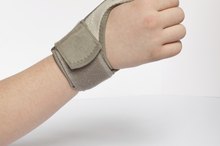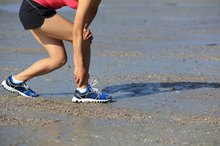Sartorius & Gracilis Injuries
Because of their location in the body, the sartorius and gracilis muscles are particularly vulnerable, not just to trauma but to general wear and tear. These injuries can cause pain and make mobility difficult, but fortunately are relatively easy to treat, especially if first aid is used immediately after the injury occurs. Read on to find out more about these important muscles as well as the most common cause of trauma and injury and guidelines for treatment.
A Quick Anatomy Lesson
To understand this injury better, it is important to know where these muscles are and what they do. Both muscles are in the region of the anterior thigh: the gracilis stretches from the pubic bone (near the pubic symphysis to the inner, upper portion of the knee while the sartorius begins at the hip bone, stretches cross-wise across the thigh and also terminates just above the knee. These muscles, together with the tendons that make up the hamstring, are collectively known as the pes anserine; below this is located the pes anserine bursa, a small sac which helps to lubricate the cushion against movement in this area.
Common Causes for These Injuries
Torn Tendons & Ligaments From Hyperextension
Learn More
Injuries to the gracilis and sartorius muscles are very common in athletes and those who participate regularly in physical activities, especially those activities which involves the fast transition of the body’s weight from leg to leg. These kind of injury can often occur when the upper leg is stretched beyond what it was built for, and the resulting tension can cause separation or tearing of the muscles and tendons in pes anserine area. Another common cause of injury to this area is overdoing physical activity which causes the wearing down, inflammation and irritation of the pes anserine bursa. This causes a condition known as pes anserine bursitis.
- Injuries to the gracilis and sartorius muscles are very common in athletes and those who participate regularly in physical activities, especially those activities which involves the fast transition of the body’s weight from leg to leg.
- These kind of injury can often occur when the upper leg is stretched beyond what it was built for, and the resulting tension can cause separation or tearing of the muscles and tendons in pes anserine area.
Treatment
Injuries to the sartorius or gracilis muscle as well as pes anserine bursitis are all considered to be largely self-limiting conditions, which means that they are usually able to heal without surgery. However, there are some guidelines to follow when such an injury happens. To begin with, basic first aid is a must. Elevating the injured leg, the use of compression and the application of cold packs when the injury first happens can help reduce the inflammation – and thus the pain – of the affected area. Some temporary lifestyle alterations such as rest, modified activity and use of crutches or cane may also be necessary while the injury heals.
- Injuries to the sartorius or gracilis muscle as well as pes anserine bursitis are all considered to be largely self-limiting conditions, which means that they are usually able to heal without surgery.
- Some temporary lifestyle alterations such as rest, modified activity and use of crutches or cane may also be necessary while the injury heals.
Basic prevention and care
Gluteus Medius Muscle Strain
Learn More
In short, injuries of the sartorius or gracilis muscles are common in those who participate in sports or regular physical activity. While these injuries can be painful and limit mobility while they heal, they are generally treatable with basic self-care like rest, elevation and cold packs. They generally do not require surgical intervention. Also, the risk for these injuries can be reduced through simply measures like stretching and proper foot attire, making them a relatively easy condition to treat.
- In short, injuries of the sartorius or gracilis muscles are common in those who participate in sports or regular physical activity.
Related Articles
References
- Mohseni M, Graham C. Pes Anserine Bursitis. Treasure Island (FL): StatPearls Publishing; 2020 Jan-.
- Mohseni M, Graham C. Pes Anserine Bursitis. Treasure Island (FL): StatPearls Publishing; 2020 Jan-.
- Malanga GA, Yan N, Stark J. Mechanisms and efficacy of heat and cold therapies for musculoskeletal injury. Postgrad Med. 2015;127(1):57-65. doi: 10.1080/00325481.2015.992719
Writer Bio
Rachel Nall began writing in 2003. She is a former managing editor for custom health publications, including physician journals. She has written for The Associated Press and "Jezebel," "Charleston," "Chatter" and "Reach" magazines. Nall is currently pursuing her Bachelor of Science in Nursing at the University of Tennessee.









